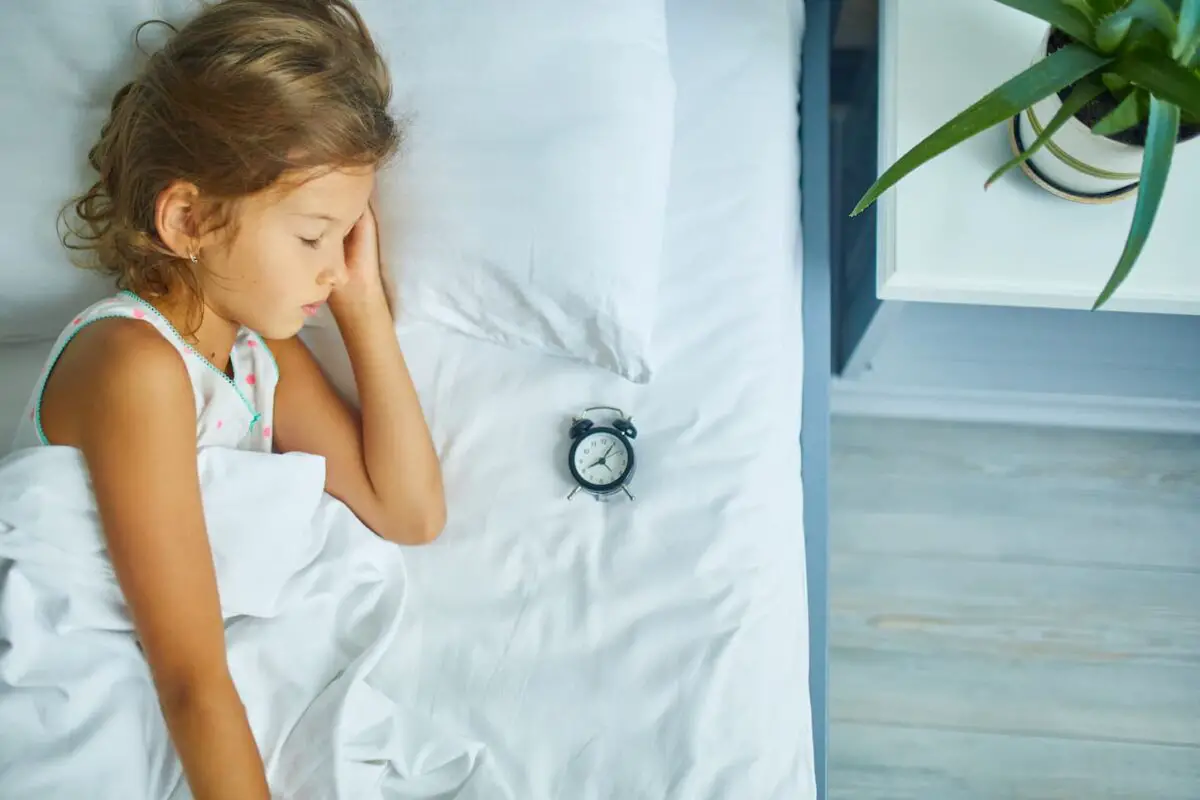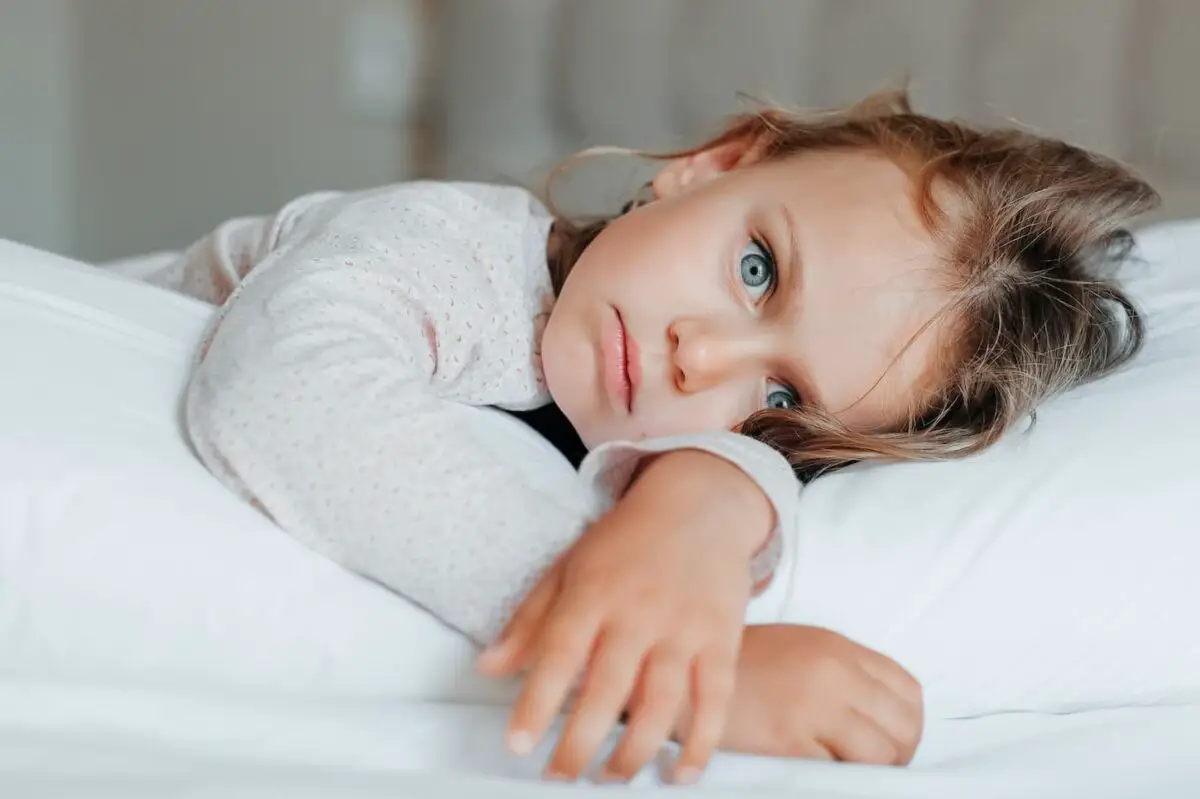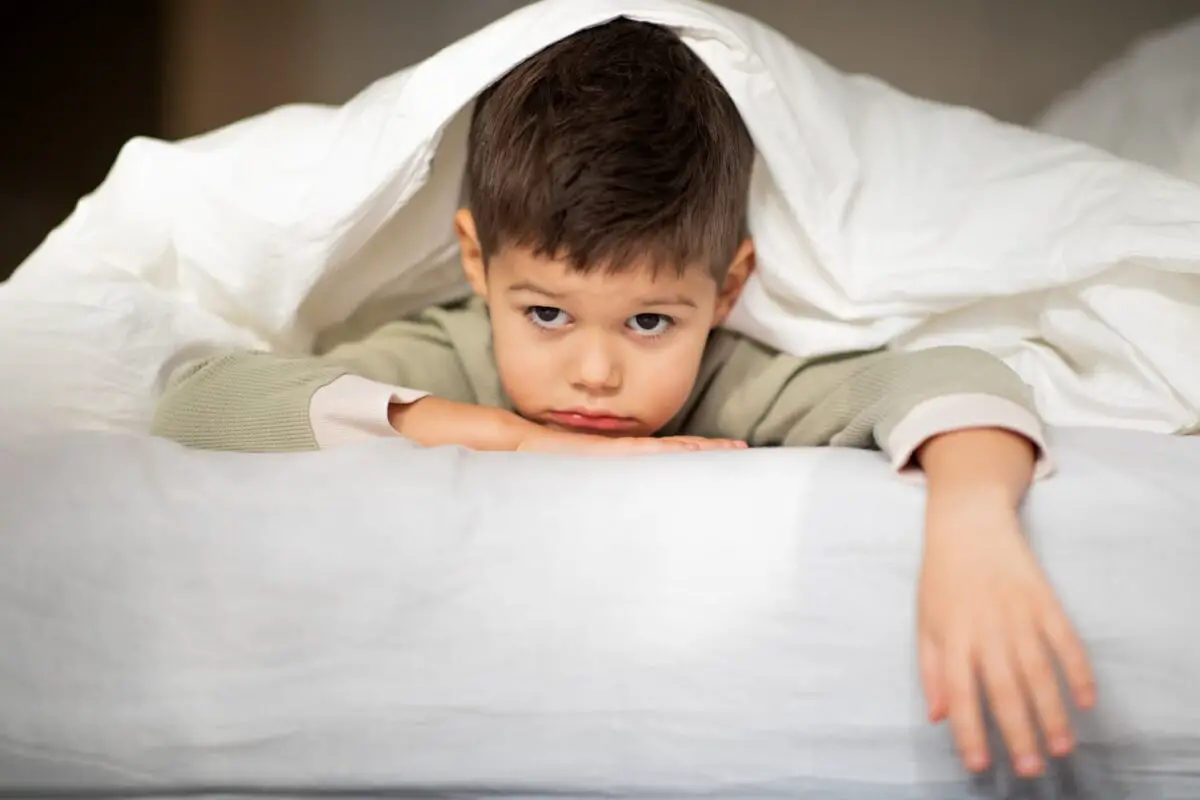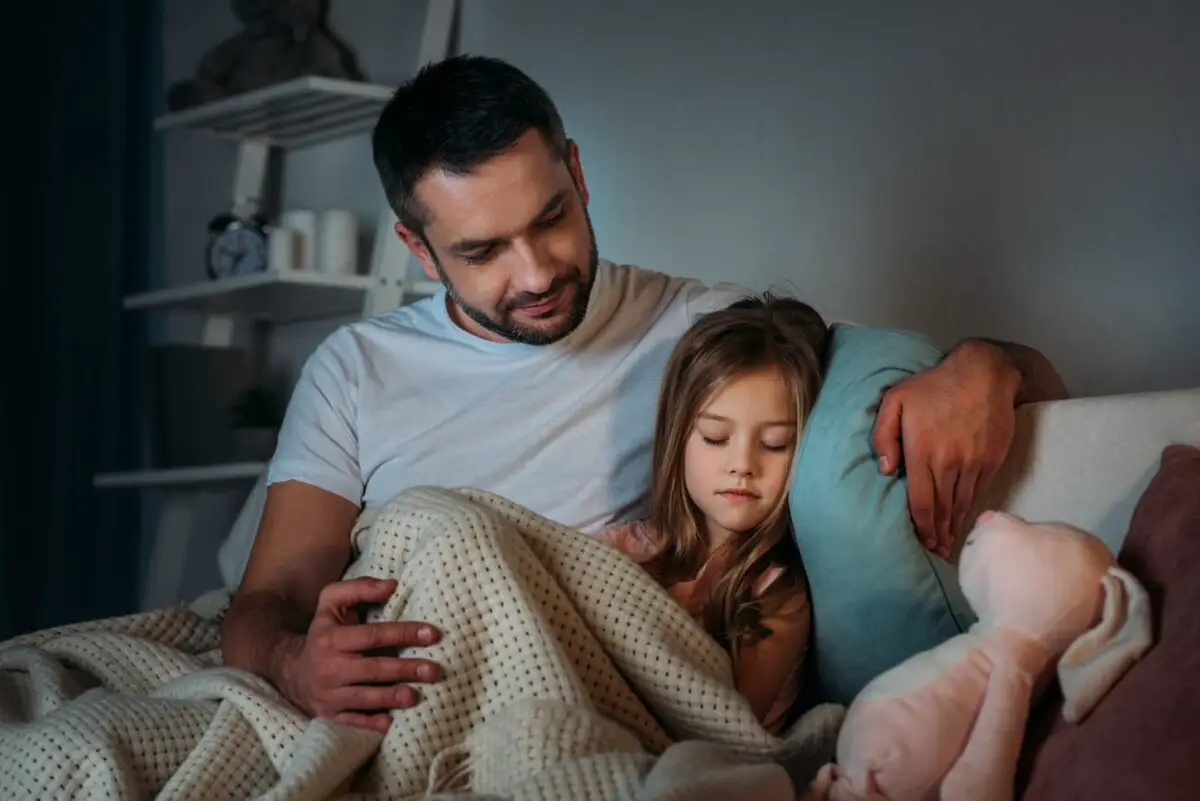As a parent, it’s essential to understand the common sleep challenges children face during their developmental years. Sleep plays a crucial role in a child’s growth and overall well-being, and navigating these challenges can help ensure a healthy sleep routine for your little one.
Children can experience sleep challenges, including night terrors, nightmares, sleep apnea, and restless leg syndrome. To address these challenges, consider the amount of sleep children need at different ages. Create a bedtime schedule that promotes sufficient sleep for a child’s development.
You can support their emotional, cognitive, and physical development by being attentive to your child’s sleep patterns and knowing how to address potential difficulties. Remember that understanding and addressing sleep challenges early on can play a crucial role in fostering a lifetime of healthy habits and overall well-being for your children.

Common Sleep Challenges in Children
As children grow and develop, they may encounter various sleep challenges throughout the different stages of their lives and development. By understanding these issues, you can better support your child’s health and well-being.
Problems Falling Asleep
Children may struggle with falling asleep due to various factors, such as stress, anxiety, or a lack of consistent bedtime routines. To help your child fall asleep more easily, establish a calming and consistent bedtime routine that promotes relaxation.
This may include activities such as reading bedtime stories, taking a warm bath, or practicing deep breathing exercises.
Decreasing screen time and exposure to bright lights in the evening can also help regulate your child’s circadian rhythm.
Insomnia
Insomnia in children can present itself through difficulty falling asleep, frequent awakenings, or waking up too early. This can result in inadequate sleep and potential behavioral problems or irritability.
If insomnia persists, consult your child’s pediatrician to discuss potential treatments and interventions.
Parasomnias
Parasomnias are sleep-related behaviors that may disrupt a child’s sleep, such as sleepwalking, sleep talking, or night terrors. Some common parasomnias include:
- Night terrors: These can be frightening for everyone. Children may scream, thrash, or appear very distressed during an episode. They may not recall the event.
- Sleepwalking: This occurs when a child gets out of bed and moves around, but they are still asleep. Keeping their sleep environment safe can help prevent injuries.
- Sleep talking: While typically harmless, sleep talking can disrupt your child’s sleep and that of other family members, especially if kids share a room.
If your child is experiencing any of these issues, consult their pediatrician to help develop strategies for managing and minimizing their impact on sleep quality.
Our kids all had night terrors, some of which happened during the day – particularly when they didn’t get enough daytime sleep (nap time). They are the literal worst.
My poor brother and sister-in-law were watching our oldest during a night terror. Thankfully, we’d warned them beforehand because they very logically considered taking him to the emergency room – the screaming and thrashing were that bad. Our son didn’t remember it later.
Adolescent Sleep Issues
Teenagers often experience sleep challenges, including a natural shift in circadian rhythm that may result in later bedtimes and wake-up times.
Additionally, the pressure of school, extracurricular activities, and social life can lead to irregular sleep schedules and a potential lack of sleep.
Encourage your teenager to maintain a consistent sleep schedule and prioritize sleep as an essential aspect of their overall health.
Discuss the situation with your teenager’s school or healthcare provider for additional support and guidance if necessary.

Common Sleep Disorders in Children
As a parent, understanding common sleep challenges in children is essential to help ensure proper growth, development, and overall well-being.
This section will explore three common sleep disorders in children: Obstructive Sleep Apnea, Restless Legs Syndrome, and Behavioral Insomnia.
Obstructive Sleep Apnea (OSA)
Obstructive Sleep Apnea is a sleep disorder in which your child’s breathing is repeatedly interrupted during sleep due to a blockage in the airway. This blockage is often caused by enlarged tonsils or adenoids, leading to partial or complete blockage of the throat.
If you notice symptoms like snoring, gasping, or excessive daytime sleepiness in your child, it’s important to consult a pediatrician for a thorough evaluation. Untreated OSA can lead to complications, including cardiovascular issues and poor academic performance.
Restless Legs Syndrome (RLS)
Restless Legs Syndrome is a neurological disorder characterized by an irresistible urge to move the legs, especially at night. This condition can cause significant sleep disruptions, leading to daytime sleepiness and fatigue.
RLS in children may manifest as growing pains, discomfort, or difficulty falling or staying asleep.
To help your child cope with RLS, seek advice from a pediatric sleep specialist, who may recommend lifestyle adjustments or medication.
Behavioral Insomnia
Behavioral Insomnia is a common sleep disorder affecting 10% to 30% of children, according to this 2022 study.
It usually results from inconsistent parental limit-setting, improper sleep-onset associations, and bedtime routines.
The two main subtypes of behavioral insomnia are:
- Sleep-Onset Association Insomnia: When your child needs specific conditions or assistance to fall asleep, such as rocking or nursing.
- Limit-Setting Insomnia: When your child refuses to go to or stay in bed, and you struggle to enforce bedtime rules.
To overcome behavioral insomnia, establishing consistent bedtime routines and setting clear boundaries can significantly improve your child’s sleep. Additionally, consider seeking guidance from a pediatrician or sleep specialist to tailor an effective sleep plan for your child.

Impact of Inadequate Sleep on Child Development
It is essential to ensure your child gets enough sleep and maintains a consistent sleep schedule to support their physical, emotional, psychological, cognitive, and academic development.
Plus, it helps them not be cranky. Nobody wants cranky children.
Cognitive and Academic Performance
Lack of proper sleep can significantly affect your child’s cognitive development and academic performance. Insufficient sleep may negatively affect their memory, attention, and learning abilities, hindering their overall growth and progress in school.
Physical Health
Inadequate sleep doesn’t just affect the mind; it also has implications for your child’s physical health. Insufficient sleep can contribute to obesity and even cause issues with the immune system.
Encouraging regular bedtime routines and monitoring your child’s nap patterns can help you stay on top of their overall physical well-being.
Getting your child outdoors and being active will only help their sleep – especially if you time it so they are ready for bedtime!
Emotional and Social Well-being
Your child’s life’s emotional and social aspects could also suffer due to insufficient sleep. Poor sleep quality in children has been linked to anxiety, mood disturbances, and depression.
Furthermore, it may impact their ability to form and maintain healthy relationships with their peers. Ensuring your child gets enough sleep will support their emotional stability and social interactions, setting them up for a brighter future.
Overall, it’s crucial to prioritize your child’s sleep and be mindful of potential challenges that may arise. Maintaining a structured sleep schedule and addressing early sleep disorders can significantly impact your child’s cognitive and emotional development, leading to a healthier and happier life.

Diagnosis and Treatment of Sleep Problems
If you notice irregularities in your child’s sleep or behavior, such as excessive daytime sleepiness or difficulty falling asleep, it’s essential to address these concerns with a healthcare professional. They can guide whether further evaluation, such as polysomnography, or sleep study, is necessary.
Parental Concerns and Consultation
As a parent, it’s essential to understand your child’s normal sleep patterns, especially during infancy and throughout their development. Comparing known patterns with expected patterns can help in the consultation and diagnostics of what’s happening.
Important note for sleeping infants and babies: Parents should know the American Academy of Pediatric’s recommendations for sleep positions to reduce the risk of sudden infant death syndrome (SIDS). Do your best to adhere to these recommendations to reduce the risk of SIDS.
Medical Interventions
For some children, sleep problems may be related to medical or mental health issues that need to be addressed by a healthcare professional. Conditions like childhood insomnia, sleep apnea, or restless leg syndrome may require medical interventions.
Sometimes, your child may be prescribed medication or a sleep aid to help them achieve better quality sleep.
Additionally, medical experts might suggest addressing any mental health concerns affecting your child’s sleep. Anxiety, depression, and stress can interfere with healthy sleep, so discussing these issues with a healthcare professional is essential.
Behavioral Techniques
In some cases, sleep problems in children can be resolved through behavioral techniques. These methods aim to teach your child healthy sleep habits and reinforce positive sleep behaviors. Some common behavioral techniques include:
- Sleep schedules: Establish a consistent bedtime and wake-up time for your child, even on weekends, to help regulate their internal sleep clock.
- Sleep environment: Ensure your child’s sleep space is comfortable, dark, and quiet to facilitate better sleep.
- Limit screen time: Encourage your child to engage in calming activities before bedtime, such as reading or taking a warm bath, and avoid screen time within an hour of bedtime.
- Extinction techniques: For younger children, extinction techniques, such as controlled crying or graduated extinction, can help teach your child to self-soothe and fall asleep independently on a faster timeline than techniques that don’t use extinction.
Implementing these strategies can promote your child’s healthy sleep habits and improve sleep quality, alertness, and overall well-being.
Remember, it’s important to consult with a healthcare professional before implementing significant changes to your child’s sleep routine, especially if you suspect a medical or mental health issue may be at play.

Sleep Tips and Additional Considerations
Helping your child develop healthy sleep habits is important for their physical and emotional well-being. Take note of the following pointers to make bedtime smoother for you and your child.
Napping and Memory Consolidation
Children ages 3 to 5 must get 10 to 13 hours of sleep per day, which may include naps. Naps can be beneficial for memory consolidation and overall cognitive functioning.
ADHD and Chronic Sleep Loss
Children with ADHD may experience challenges with their sleep-wake pattern, resulting in behavioral problems and chronic sleep loss.
Pay attention to any sleep deprivation signs and consult a doctor if needed.
Limiting Bright Lights and Caffeine
To create an ideal sleep environment, diminish bright lights before bedtime and avoid giving your child any caffeine-containing beverages or snacks during evening hours.
Generally speaking, caffeine and stimulants aren’t great for children, period. If avoiding them completely isn’t possible, avoid them close to any sleeping periods and avoid them after lunch so they don’t affect bedtime.
Addressing Common Sleep Challenges
- Sleep talking and nightmares: These are two common sleep challenges children experience. Reassure your child and provide comfort, as they might have difficulty distinguishing reality from dreams.
- Melatonin and iron deficiency: If your child has trouble falling or staying asleep, consider discussing these two factors with a doctor. Melatonin supplements or addressing an iron deficiency might make a difference.
- Obstructive Sleep Apnea (OSA) and enlarged tonsils: OSA may be caused by enlarged tonsils, leading to excessive daytime sleepiness and other issues. Consult with a doctor if you suspect these conditions.
- Enuresis (bedwetting): This can be a distressing challenge for parents and children. Encourage a consistent bedtime routine, limit liquids before bedtime, and consider using moisture alarms for additional support.
Remember that every child is unique, so be patient and explore different strategies as you work together to overcome common sleep challenges.
Key Takeaways
When kids have trouble sleeping, it can be a really big deal. It’s not just about feeling tired the next day – it can also affect their behavior, mood, and learning ability. Plus, it can cause health problems like obesity and a weakened immune system.
And it’s not just the kids who suffer – parents can get stressed and sleep-deprived, making things even harder. So if you notice your child having trouble sleeping, getting help is important so you can all get the rest you need.
Make sure you bookmark this site because helping your family get better sleep is what we’re here to do – along with helping you all get along better by using gentler, healthier communication methods.
Resources
Learning about parenting or sleep training techniques is important to learn from various reputable sources. These are the sources used in this article and our research to be more informed as parents.
- Bhargava, S., MD. (2011, March). Diagnosis and Management of Common Sleep Problems in Children. https://publications.aap.org/pediatricsinreview/article-abstract/32/3/91/32847/Diagnosis-and-Management-of-Common-Sleep-Problems?redirectedFrom=fulltext
- Child sleep: Put preschool bedtime problems to rest. (2023, January 14). Mayo Clinic. https://www.mayoclinic.org/healthy-lifestyle/childrens-health/in-depth/child-sleep/art-20044338
- Common Sleep Disorders in Children. (2022, February 1). PubMed. https://pubmed.ncbi.nlm.nih.gov/35166510/
- Deshpande, P. (n.d.). Common Sleep Disorders in Children. AAFP. https://www.aafp.org/pubs/afp/issues/2022/0200/p168.html
- Pacheco, D., & Pacheco, D. (2023, March 29). Children and Sleep. Sleep Foundation. https://www.sleepfoundation.org/children-and-sleep
- Schlieber, M., & Han, J. (2021). The Role of Sleep in Young Children’s Development: A Review. Journal of Genetic Psychology, 182(4), 205–217. https://doi.org/10.1080/00221325.2021.1908218
- Sleep Problems in Children. (2022). American Academy of Pediatrics. https://publications.aap.org/patiented/article-abstract/doi/10.1542/peo_document200/80112/Sleep-Problems-in-Children?redirectedFrom=fulltext
- Summer, J., & Summer, J. (2023). Sleep Disorders in Children. Sleep Foundation. https://www.sleepfoundation.org/children-and-sleep/sleep-disorders-in-children